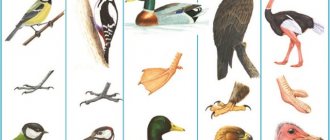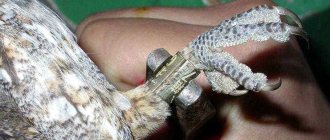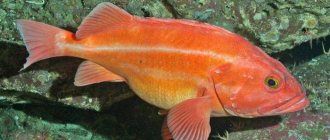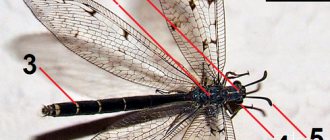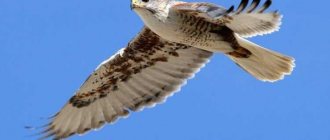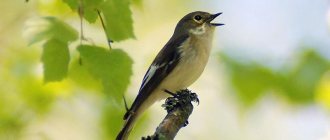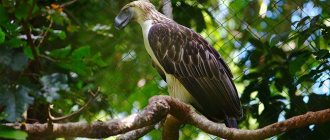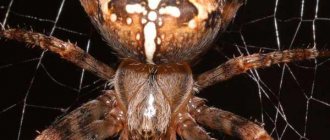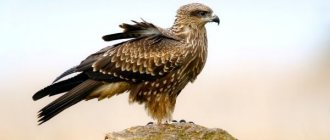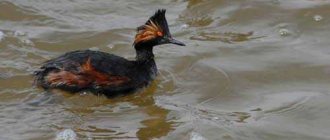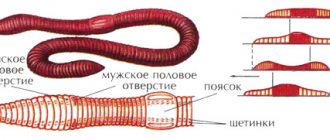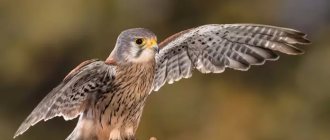Basic characteristics of birds
These animals have several distinctive features. During the process of evolution, their forelimbs turned into wings, thanks to which almost all species are adapted for flight.
Their skin is dry, without sweat glands, and completely covered with feathers, which play an important role in flight. Another characteristic feature is their beak, which replaces jaws.
Classification of birds
The class of birds is divided into almost 30 orders, which in turn are divided into families, genera and species. It should also be taken into account that there is still no clear classification, therefore different families and orders are often classified as different groups.
Here is one of the classifications, including some extinct species.
The whole class is divided into two subclasses:
- lizardtails (extinct Archeopteryx);
- fantails (all others).
Fantails are divided into four superorders:
- toothed (also extinct);
- floating;
- ratites;
- ancient palatal and new palatal.
The swimmers consist of one group - penguins.
Ratites or drenopalatines are flightless species and include ostriches, cassowaries, kiwis and tinamous, in a total of five orders.
New palates are the largest group, including more than twenty orders. Orders usually consist of one to three families, less often - five or six, and the largest order - passerines, includes 66 families and more than 5000 species, that is, more than half of all known.
Characteristics of units
The class includes over 10,000 species belonging to 40 orders. The classification of birds has been revised several times and continues to be developed. According to the classification of the International Union of Ornithologists, the subclasses Ratites (6 orders) and New palatines (34 orders) are distinguished.
Ostriformes or Ostriformes belong to the subclass Ratites. Large birds live in the open landscapes of Australia, Africa, and South America. They don't fly, but they run very fast. The African ostrich is the largest modern bird. The height of an adult is up to 2 m, weight is up to 75 kg.
The subclass New Palatines is a large group of orders of birds inhabiting various natural zones and landscapes. Representatives of the order Penguins or Penguinaceae are flightless birds that can swim and dive well. They live in the coastal waters of Antarctica, Australia, South America, South Africa, and the islands of the Southern Hemisphere. Penguins eat fish and shellfish and breed on the coast. The richest in species is the order Passeriformes (Fig. 3).
Rice. 3. Tit
Table 1.
Comparative characteristics of bird orders belonging to different groups
| The most important orders of birds | |
| Squad | Signs. Representatives |
| Passeriformes | Mostly forest birds, they have four-fingered limbs (three fingers pointing forward, one back); chicks, live in pairs during the nesting period. Representatives:
|
| Charadriiformes | Brood birds, live along river banks and wetlands; medium size, long legs and a thin long beak. Representatives:
|
| Anseriformes | Along the edges of the beak there are horny plates or teeth, and at the end of the beak there is a thickening - the marigold; waterfowl brood birds. Representatives:
|
| Penguins | The wings are narrow, unsuitable for flight, the feet have membranes, the legs are carried back, the skeleton is heavy, and the feather cover is very thick. Representatives:
|
| Crane-like | Birds of open spaces have long legs and necks. Representatives:
|
| Ostriches | Large birds; have weak, unfit for flight wings and strong legs. Representatives:
|
| Chicken | Short rounded wings (fly heavily), four-fingered legs, with large claws and dense feathers, the beak is relatively large. Representatives:
|
| Diurnal predators | Long, sharp, hook-shaped claws; beak short, curved; the flight is fast. Representatives:
|
| Owls | Nocturnal birds of prey, with strong curved beaks and sharp claws, sensitive hearing and sharp eyesight, have loose and soft plumage, allowing them to fly silently. Representatives:
|
Birds belonging to different orders, but having similar adaptations to environmental conditions and similar behavior, are combined into ecological groups. Ecological groups are distinguished by habitat, feeding and nesting methods. Ecological groups by habitat: birds of ponds, swamps, forests, open spaces.
Based on their feeding method, birds belong to the following ecological groups:
- herbivores (finches, siskins, thrushes, waxwings (Fig. 4);
- insectivores (tits, woodpeckers, rubots);
- raptors (falcons, hawks, eagles, owls);
- scavengers (vultures).
Rice. 4. Waxwing
Features of structure and life activity
Being descendants of reptiles, birds have retained some of their features. They have no sweat glands, dry skin, and their legs are covered with scales.
Like reptiles, they are not viviparous and lay eggs.
At the same time, the ability to fly was also reflected in the structure of their body. Their muscles are stronger and their overall muscle mass is higher relative to their body than that of reptiles.
To stay in the air, their body is relatively small and weighs little due to light bones, and their small head reduces air resistance during flight.
On the contrary, those of them that live on the ground can reach enormous sizes and are heavy.
During flight, birds spend a lot of energy, hence the need for large amounts of food and a high metabolic rate. For this reason, their digestion processes have accelerated, and their body temperature is also high.
As for the diet itself, among them there are both herbivores, carnivores and omnivores.
In addition, we can note individual characteristics that have appeared in different species, depending on their habitat and lifestyle. In flightless ones, the wings have practically disappeared, but the legs, on the contrary, are powerful and strong, and their size and weight are much higher than those of flying ones.
The beak of predators is pointed and curved, convenient for tearing meat; in those that feed on solid food, it is powerful and thick.
The paws of predators are equipped with claws, those of swimmers have a membrane formed between their toes, and those of trees have long curved claws for clinging to the surface.
Field
Field or meadow birds are distinguished by a variety of species. They prefer dense thickets. Many species have a camouflage color, so they are not easy to see among meadow grasses and shrubs.
A pair of demoiselle cranes in the steppe
Lapwing
Another name for the bird is pigtail, which belongs to the Rzhankov family. Individuals reach 30 cm in length and weigh about 200 g. The color of the lapwing is very colorful, and its characteristic feature is a small crest on the head. Pigalits feed mainly on insects and seeds.
Lapwing
Lark
The field lark has a light brown color, which allows it to remain almost invisible among thickets of dry grass. Male larks are larger than females. On the head there is a small curled crest. Meadows, fields and steppes are the lark’s natural habitat. It cannot be found among the dense trees.
Lark
Dumb Quail
The mute or Japanese quail is a migratory bird that has been domesticated by humans. Many consider it a subspecies of the common quail, since these birds are very similar except for some external differences and sounds made. Quail is widespread in Primorye.
Dumb Quail
Bustard
Bustards are very large birds. Males weigh up to 16 kg, body length is a little more than a meter. Females are half the size. Bustards are distinguished by their beautiful varied plumage, which combines shades of black, white, red and gray. Birds fly skillfully, but prefer to move on the surface.
Bustard
What science studies birds
The science that studies birds is called ornithology (from the Greek ὄρνιθος (bird) and λόγος - study). The term was introduced by the Italian scientist U. Aldrovandi in the 16th century.
Ornithologists study the origin, habits, structure of birds and much more, and also engage in systematization and description. Until the 19th century, scientists were only engaged in describing animals, studying their structure and way of life, and later they also began to study their distribution around the globe and migration.
Ornithologists' research plays an important role in other fields of science, such as breeding and genetics, and helps in agriculture and forestry.
Origin, taxonomy
P. are known in fossil form since the Late Jurassic (about 150 million years ago), but their origin and beginning of formation probably date back to earlier stages of the Mesozoic era. P. originated from reptiles; according to the traditional point of view, their ancestors are early archosauromorphs, which also gave rise to dinosaurs, pterosaurs and crocodiles; according to an alternative hypothesis, P.'s ancestors are predatory bipedal dinosaurs - theropods (Theropoda). The latter hypothesis is supported by recent discoveries of many feathered forms of dinosaurs, but the family connections of P. in general, the position of the Late Jurassic “first bird” Archaeopteryx (Archaeopteryx) and a number of archaic Mesozoic groups remain debatable. P.'s closest living relatives are crocodiles. 2 subclasses: lizard-tailed P. (Archeornithes), with the only representative Archeopteryx, and fan-tailed, or new, P. (Neornithe) with three extinct ones (toothed birds, epiornithids and moaformes) and ca. 30 modern in squads. Modern fantails are a clearly defined monophyletic group that experienced its greatest flourishing (presumably 12–15 thousand species) in the late Cenozoic (end of the Miocene, 10 million years ago) and still maintains high diversity (more than 10 thousand species, more than 100 billion years ago). simultaneously living individuals).
Usually approx. 200 families and 2.5–3 thousand modern genera. P., however, with the development of gene systematics and cladistic phylogeny of traditions. P.'s classification is subject to means. revisions. The most archaic look are the paleognaths (Palaeornithes), uniting the ostriches (Struthioniformes) and the tinamiformes (Tinamiformes); another separate ancient branch consists of the orders of Anseriformes and Galliformes. Neognathae are represented by such orders as Sphenisciformes, Procellariiformes, Pelicaniformes, Ciconiiformes, Falconiformes, Gruiformes, Charadriiformes, Columbiformes, and Bite-like (Cuculiformes), parrots (Psittaciformes), owls (Strigiformes), swifts (Apodiformes), coraciiformes (Coraciiformes), woodpeckers (Piciformes), passerines (Passeriformes) and a number of others. Passeriformes (or passerines) are the youngest and most prosperous order, covering up to 2/3 of modern times. class diversity.
Bird skeleton
The diagram of the pigeon skeleton is shown in the picture.
The structure of a bird's skeleton is directly related to their ability to fly. Bird bones are light and often hollow. The parts of the spine are often fused to each other, except for the cervical, which, on the contrary, is flexible.
The sternum forms a strongly prominent keel, to which strong wing muscles are attached. In flightless animals, it is, accordingly, absent.
Digestive system
The food eaten goes from the pharynx to the esophagus, from there to the stomach and then to the intestines. Since representatives do not have teeth, the stomach is used to grind food, which the birds fill with small pebbles, and then its powerful muscular walls grind the food.
The bird's intestines are very short so as not to create excess weight, and since the rectum is poorly developed, feces do not accumulate in the body and are quickly eliminated.
A well-known feature of avian digestion is its high speed. In some species, complete digestion of food takes a matter of minutes.
Stratem
The mysterious and gigantic Stratim bird, also known as the Straphil bird, is the archetype of the progenitor, the mother of all birds. She lives on the sea-ocean and holds the whole white world under her right wing. Stratim personified the most terrible and permissive forces of nature. She will flap her wing - the sea will become agitated, she will scream - a storm will rise, and if she will fly - she will cover the white light... Ships will sink in the sea, the deepest abysses will open up, cities and forests will disappear under water.
Respiratory system
The structure of the respiratory system of birds is also largely related to their ability to fly, as well as the enhanced gas exchange that their body needs. The respiratory system of birds has a complex structure compared to those of other animals.
Its characteristic features are small, dense lungs. In addition, special air sacs are associated with the lungs, which are necessary for normal breathing during flights.
When a bird inhales air during flight, it enters the air sacs, and when exhaled, thanks to the special structure of the lungs, it passes through them again.
Lifestyle
When studying the bird fauna of any area, one can note the variability of its composition at different times of the year. In fact, very few birds live with us both winter and summer. This is largely due to seasonal changes in the lives of birds. In this regard, according to their lifestyle, all birds can be divided into three groups: sedentary, nomadic and migratory.
After winter comes a revival in nature. With the arrival of spring, significant changes occur in the lives of birds. Migratory birds return from wintering grounds.
For life, birds choose areas with favorable conditions, organizing nesting in the same place year after year. Here the male begins to sing, luring the female, and notifying others that the place is occupied. Birds, when choosing their life partners, attach great importance to the color of their plumage. Therefore, males have brighter colors to attract females.
Many people choose a pair for one season. However, birds are known in which pairs form for a long period or for life. For example, storks, herons, swans and birds of prey.
After the pair is formed, a crucial period begins. In the life of birds, spring is the time for breeding, and then caring for the offspring. To do this, they begin nest-building, laying eggs and raising chicks.
Caring for offspring: a penguin protects a chick from a petrel
In wildlife you can observe very interesting moments from the life of birds. For example, bird markets are of great interest. A striking example of such social life is the mass nesting of birds in the north. Birds live in a colony and work together to protect their young from predators. Such collective life makes it possible to preserve offspring, protect themselves from predators, and thereby increase the life expectancy of birds.
Bird market in Kamchatka
After spring and summer come the first cold days. The life of animals and birds in the fall is aimed at preparing for the winter cold. Birds that cannot find food in the cold fly away to warm countries. It is generally believed that birds fly south. Bird ringing has shown that many of them fly to the west and southwest. The autumn flight of birds is extended over time. It lasts about three months.
The first snowfall in autumn causes anxiety among birds. The first changes in the way of life of birds are taking place. Sedentary birds switch to coarse, low-nutrient woody food - buds, shoots and needles. Many birds migrate for the winter closer to populated areas. Nomadic birds begin to appear.
Nomadic birds - waxwings
It is difficult for all living things in this harsh season of the year. The cold hinders the movements of birds. Lack of food and death of forest inhabitants are often observed. It is within our power to take care of our feathered friends and organize feeding. It’s not difficult to make a simple feeder and hang it out the window in the yard, garden or park. We will save many birds from hunger and help them survive until the first warm days of spring.
Sparrows and tits at the feeder
Birds will not remain in debt, because they bring great benefits to humans. The positive significance of birds in human life lies in the destruction of insects and rodents - agricultural pests. Such useful birds include all insectivores, such as tits, nuthatches and others. It is impossible not to say about woodpeckers, which eat harmful insects: bark beetles, click beetles, golden beetles, etc.
White-backed Woodpecker
Owls and owls are considered energetic hunters of mouse-like rodents. Birds of prey also destroy mice: buzzard, kestrel, harrier, etc.
Gray owl with prey
Birds are of great economic and commercial importance. Some birds provide tasty meat (hazel grouse, black grouse, wood grouse, ducks, etc.), while other birds provide valuable feathers (eiders, loons, geese).
Representatives of the chicken and anseriformes orders are domesticated. Poultry farming is a large livestock industry that supplies food.
Poultry meat is very nutritious and tasty. Chicken eggs are a valuable food product.
Chickens at a poultry farm
The importance of birds in nature is also very significant. Birds, as already mentioned, regulate the number of living organisms. Sometimes birds themselves serve as food for other animals, being a link in the food chain.
Without these animals, the seeds of many plants would not be distributed over significant distances. Pecking at various berries, they throw out intact seeds with droppings, often far from the place where they grew.
Excretory system
The excretory organs of birds are similar to those of reptiles. Their kidneys are very large due to increased metabolism.
A ureter emerges from each kidney and opens into the middle section of the cloaca. The adrenal glands are located near the upper edge of the kidneys. There is no bladder, as in the case of the rectum, this allows urine not to linger in the body and lightens the weight.
Brain
Birds have a well-developed nervous system compared to reptiles, and the brain is much larger. In flying birds it is much larger in relation to the rest of the body than in non-flying birds.
The size of brain regions is directly related to the lifestyle of animals. For example, their medulla oblongata and cerebellum are well developed, since they are responsible for those processes that occur especially actively in them.
On the contrary, the olfactory lobes are small, and therefore most of them have difficulty distinguishing odors (with the exception of scavengers). The intelligence of many species is quite high, they can use improvised objects, and are capable of learning.
Finist Yasny Sokol
The appearance of another famous character in Russian fairy tales, Finist the Clear Falcon, is also associated with the Phoenix bird. The image of a young man who can transform into a falcon is considered to be borrowed from Western mythology, like a wonderful husband visiting his beloved in the guise of a bird.
Reproduction
Birds have pronounced sexual dimorphism (females and males are very different from each other). Most species are monogamous and form stable pairs, some for several seasons, others for life.
Birds are not viviparous and reproduce by laying eggs. For the development and subsequent hatching of the chick, high temperatures are required, so one of the parents (or both in turn) hatches it.
Parents actively care for their offspring: they bring food for their children, warm them, protect them from enemies and teach them to fly. In different polygamous species, both the female (chicken) and the male (ostrich) can take care of the chicks.
Swan Princess
The graceful Princess, half swan, half beautiful maiden, became not so much a character in the mythology of folk tales, but a widespread image in Russian art. The wonderful swan bird, living on the shore of the blue-blue sea, first flew into Pushkin’s “The Tale of Tsar Saltan”, then into Rimsky-Korsakov’s opera of the same name, and then forever remained in Vrubel’s most famous masterpiece
artist M.A. Vrubel "The Swan Princess"
The princess from Vrubel’s canvas is mysterious and enigmatic, her face is sad. The Swan Princess is depicted against the background of twilight descending over the sea, a narrow strip of sunset on the horizon and a distant city (the background was the scenery for the play - the city of Ledenets, made by the artist).
“But the picture is not a costumed portrait of an artist, it is a charming myth about the highest beauty, about the mystery of its manifestation in the world. In the aesthetics of symbolism, the swan personifies inspiration, which can both elevate the soul and lead it to the knowledge of the dark, mysterious sides of life. The artist endows his image with demonic features. The Swan Princess is a creature of dual nature; she personifies two elements - dark, cold water and at the same time upward-looking airy, heavenly. The artist is trying to capture the moment of the maiden’s transformation into a bird, the wonderful metamorphosis of forms that seem to melt in the last rays of the sunset. It conveys the elusive movement of the departing princess. The image appears to be an ethereal, ghostly apparition.”
A.P. Ivanov spoke about this picture: “Isn’t that the Virgin-Offense herself, who, in the words of the ancient poem, “splashes her swan wings on the blue sea” before the days of great disasters?”, referring to the character from “The Tale of the Regiment” Igor".
Fertilization
Fertilization in birds is internal, just like in other vertebrates. A peculiarity of the avian reproductive system is the absence of special openings in the female and external genitalia in the males (with the exception of some species).
During mating, the male simply presses his cloaca against the female (this is where the reproductive tract exits) and injects seed into her. Subsequently, it enters the ovaries and fertilizes already mature eggs there.
